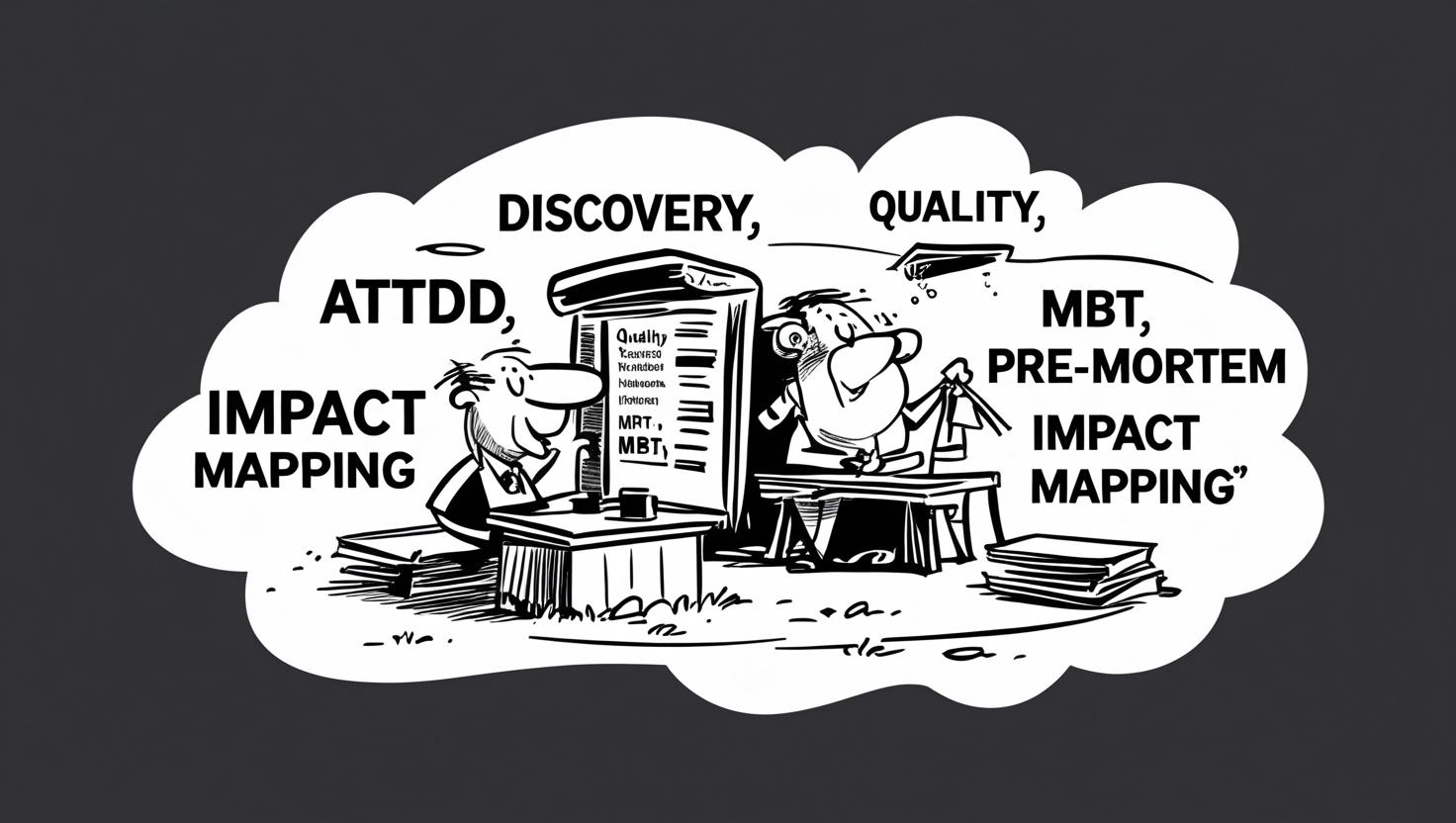
Where Should You Start with Shift-Left Testing? Discovery or Delivery?
When I first started crafting testing strategies, I often wondered:
Where should shift-left testing begin — unit testing or Discovery?
After observing challenges in my professional life, the answer became clear.
The Problem: Late Testing, Repeated Questions
In many Agile teams, testing typically starts during grooming. But here’s what I noticed:
- Frequent developer syncs to clarify requirements
- Bugs linked to missed requirements
- Prolonged grooming meetings with repeated questions from Product, UX, Devs, and QAs
This revealed the real issue:
Testing was starting too late. It should begin during Discovery.
How to Shift Left Effectively
1. Move Testing to Pre-Grooming
Grooming is too late to validate requirements. A better approach is to start earlier — during Pre-grooming — using lightweight collaboration frameworks like:
🔍 A. Behaviour-Driven Development (BDD) and the “3 Amigos”
BDD is often mistaken for just test automation tools like Cucumber. But in reality, it’s a mindset — focusing on the user’s perspective throughout development.
Use the 3 Amigos format — a pre-grooming meeting involving one person each from Product, Development, and QA. This session defines stories using Gherkin syntax:
Given
This approach:
- Encourages shared understanding
- Keeps discussions user-focused
- Reduces ambiguity before grooming
🎨 B. Visual Acceptance Testing with Model-Based Testing (MBT)
Another strong addition to early testing is Model-Based Testing:
- Create visual models of the system during Discovery
- Generate optimal test cases automatically using tools
- Embed system and test design into product development from day one
This visual-first approach boosts collaboration and testability awareness early in the cycle.
Like these there are some frameworks to help with adding quality early on. If it is a win in your team, this can even be propagated to further phases of testing - unit, integration & E2E.
So, Where to Start?
Not at grooming. Not even at pre-grooming.
Quality should start at Discovery — where the problem is known, but the solution is yet to be shaped.
Early testing helps evaluate:
- The value to users
- Business impact
- Testability of proposed solutions
To embed quality and collaboration right from the Discovery phase, consider adopting these lightweight frameworks and practices:
🔧 Frameworks & Practices for Quality in Discovery:
- 3 Amigos BDD sessions – Mini discussions among Product, Dev, and QA to shape stories early
- Example Mapping – Break down user stories with examples, rules, and questions
- Impact Mapping – Visualize how features drive business goals and user behavior
- Model-Based Testing (MBT) – Design system flows early and generate optimal tests
- Specification by Example (SBE) – Use shared examples to define and validate behavior
- Pre-mortem workshops – Proactively explore what could go wrong before solutioning
- Testing Personas – Include QA in defining edge cases from real user perspectives
These practices encourage shared understanding, testability-driven design, and reduce last-minute surprises in delivery.
Final Takeaway
Shift-left testing starts with Discovery.
That’s where true quality begins — with shared thinking, early validation, and aligned goals.
But Isn’t This a Lot of Extra Work?
Should we be afraid of adding these steps, because they look like a lot?
Absolutely not.
A 30-minute planned meeting during Discovery is far more valuable than a 2-hour unplanned firefight during delivery.
Prevention is better than cure. 🙂
And let’s not forget — we’re in the AI era. Many of these activities can soon be assisted or even facilitated by intelligent bots, making early collaboration even easier and smarter.
So let’s lean in, not hold back.
Start early. Collaborate better. Deliver quality with confidence.